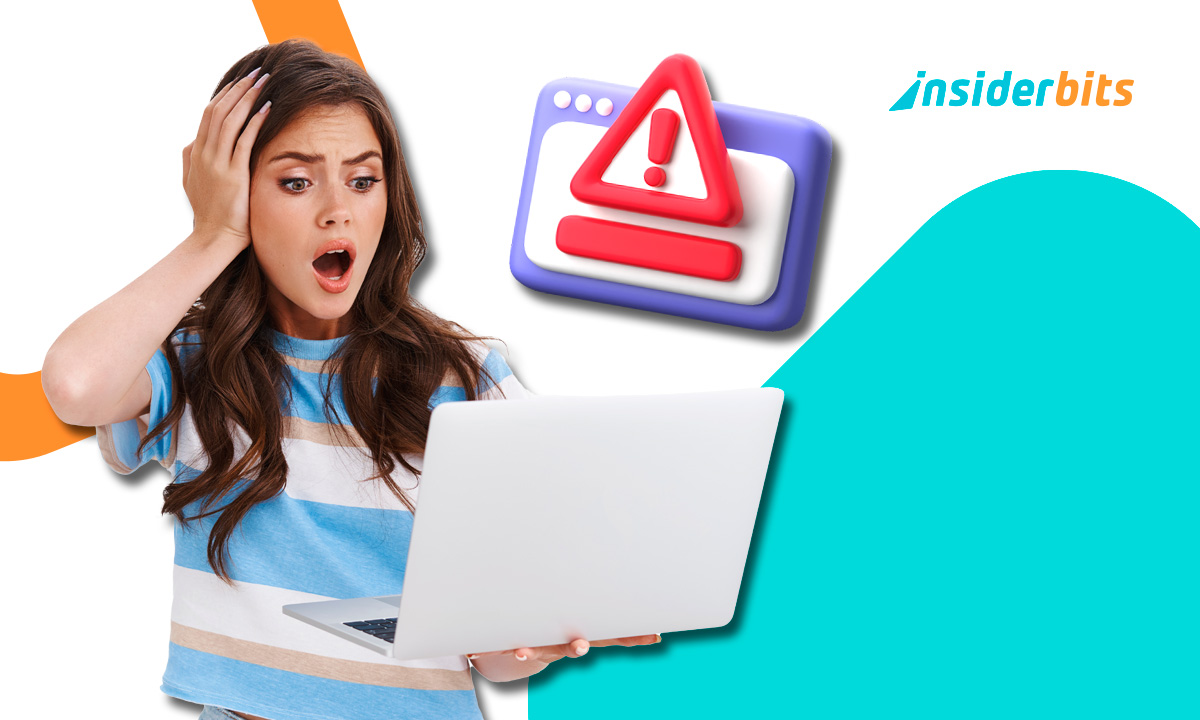Your personal data—emails, passwords, phone numbers—could be floating around the dark web without you knowing. Data breaches are more common than ever, and leaked information often ends up for sale on shady forums. Thankfully, there are tools that let you check if you’ve been compromised. Acting quickly can help prevent fraud and identity theft.
In this guide, we’ll show you how to detect Dark Web Data Leaks and what steps to take next. Whether it’s your email, login credentials, or financial info, knowing what’s out there is the first step to reclaiming your privacy. Learn how to use trusted services and apply smart security habits to stay protected.
- Überprüfen Sie Strafregister mit der App Background Check People Finder
- Best Online Plagiarism Checkers
- Best apps to get a grammar check free
Signs That Your Info Is on the Dark Web
The dark web is a hidden part of the internet where stolen data—passwords, credit card numbers, and even social security numbers—is traded.
If your information ends up there, you could face identity theft, financial fraud, or blackmail.
Warning Signs Your Data May Be Compromised:
- Unusual bank transactions (small test charges or large withdrawals);
- Password reset emails you didn’t request;
- Accounts you can’t access (hijacked social media or email);
- Suspicious calls/texts from scammers with personal details.
Nach Angaben von Palo Alto Networks, 60% of stolen data appears on dark web marketplaces within 24 Stunden of a breach.
How to Check for Leaks Safely and for Free
You don’t need to access the dark web yourself to see if your data was leaked. These free tools scan breach databases securely:
Have I Been Pwned
- Checks if your email or phone number was exposed in known breaches;
- Shows which breaches included your data (e.g., LinkedIn, Adobe, Facebook).
Have I Been Pwned is one of the most popular services for checking whether your online accounts have been compromised in data breaches.
Created by cybersecurity expert Troy Hunt, the site allows you to enter an email address or phone number to check for known exposures, and it offers automatic alerts for new breaches.
While it doesn’t have a dedicated mobile app, it’s widely used and recommended by cybersecurity professionals for its reliability and ease of use.
BreachSense
- Monitors for credit card numbers, IDs, and passwords on the dark web;
- Alerts you in real-time if your data appears in new leaks.
Data Breach is an online tool designed for security professionals and users concerned about data protection.
The platform allows you to check whether your email, domain, or company has been involved in Dark Web Data Leaks, providing details such as the type of data exposed and the source of the leak.
Although it’s not available as a mobile app, the service is free and accessible via web browser, making it a reliable choice for monitoring compromised credentials and personal information.
Google’s Password Checkup
- Google’s Password Checkup scans saved passwords in Chrome to see if they’ve been leaked;
- Recommends which passwords to change immediately.
For more privacy protection, see our guide on blocking phone spy apps.
Four Effective Ways to Protect Yourself Online
With Dark Web Data Leaks becoming increasingly common, taking proactive steps to secure your digital life is no longer optional—it’s essential.
These four security measures can significantly reduce your risk of identity theft, financial fraud, and account takeovers.
Enable Two-Factor Authentication (2FA) Everywhere
Two-factor authentication adds a critical second layer of security beyond just passwords.
How to implement it properly:
- Use authenticator apps (Google Authenticator, Authy) instead of SMS when;possible (SIM-swapping attacks can bypass SMS codes);
- Prioritize these accounts first:
- Email accounts (gateway to all other accounts);
- Banking and financial services;
- Cloud storage (Google Drive, iCloud);
- Social media profiles.
Why it matters:
Microsoft reports that 99.9% of account compromises could be prevented with 2FA. Even if hackers get your password, they can’t access your accounts without that second factor.
Use Strong, Unique Passwords Religiously
Password reuse is the single biggest security mistake people make—one breach can compromise multiple accounts.
Best practices for password security:
- Generate random passwords (16+ characters with mixed characters) using managers like:
- Never reuse passwords across sites—the Experian study showing 61% breach rate due to reused passwords proves this danger;
- Change passwords immediately after any breach notification;
- Use passphrases for memorable yet secure passwords (e.g., “PurpleTurtle$JumpsOver42Clouds!”).
Pro tip: many password managers now include dark web monitoring to alert you if your credentials appear in new breaches.
Monitor Your Accounts With Military Precision
Vigilant monitoring can catch problems before they escalate into full-blown identity theft.
Effective monitoring strategy:
- Financial accounts:
- Set up transaction alerts for all bank/credit cards;
- Review statements weekly (not just monthly);
- Use free credit monitoring like Kredit Karma.
- Email/dark web:
- Set up Google Alert for your name + sensitive info;
- Regularly check Have I Been Pwned.
- Device activity:
- Review login locations in Google/Microsoft accounts;
- Check connected apps in social media settings.
Critical insight: the Federal Trade Commission found that early detection reduces identity theft losses by an average of 85%.
Develop Phishing Detection Superpowers
Modern phishing attacks have become frighteningly sophisticated, often mimicking legitimate communications perfectly.
How to spot and avoid phishing:
- Hover before clicking (check actual URL destination);
- Watch for urgency tactics (“Your account will be closed in 24 hours!”);
- Verify unusual requests by contacting the company directly (use official website contact info);
- Enable email authentication (DMARC, DKIM, SPF) if you own domains;
- Never download unexpected attachments (even from known contacts).
Advanced protection:
- Use browser extensions like Cloudphish to analyze suspicious links;
- Consider enterprise-grade email filtering if you’re a high-value target.
Erinnern Sie sich: the Anti-Phishing Working Group reports that 94% of malware is delivered via email—making phishing awareness your first line of defense.
Implementing These Protections
While no single solution is perfect, combining these four strategies creates multiple defensive layers that make you exponentially harder to hack.
Start with the easiest steps (enabling 2FA on key accounts) and gradually implement the others. For comprehensive mobile protection, explore our guide on blocking phone spy apps.
Your digital security is an ongoing process—not a one-time fix. By making these practices habitual, you’ll dramatically reduce your vulnerability in an increasingly dangerous online world.
Why You Should Monitor Your Email and Passwords
Once your data is on the dark web, it stays there forever. Hackers can:
- Sell your credentials to multiple buyers;
- Impersonate you for loans or fraudulent purchases;
- Target you with personalized scams (spear phishing).
A CNET report found that 80% of people who were victimized by Dark Web Data Leaks, didn’t know until fraud occurred.
Take Action Now
- Scan your email at Have I Been Pwned;
- Change compromised passwords immediately;
- Enable 2FA on high-risk accounts (email, banking).
The sooner you act, the lower your risk of financial loss or identity theft. Stay vigilant—your data is more exposed than you think.





